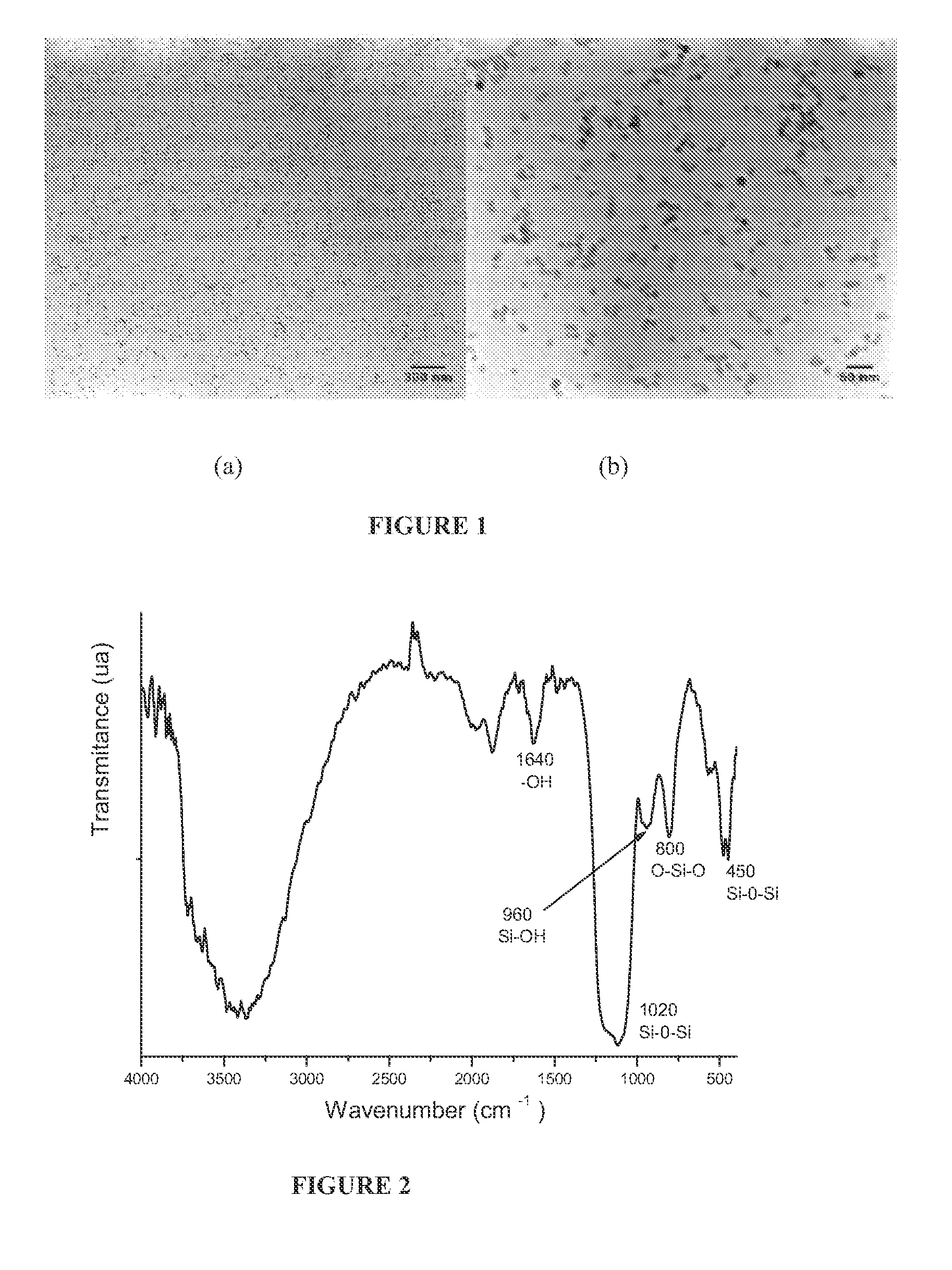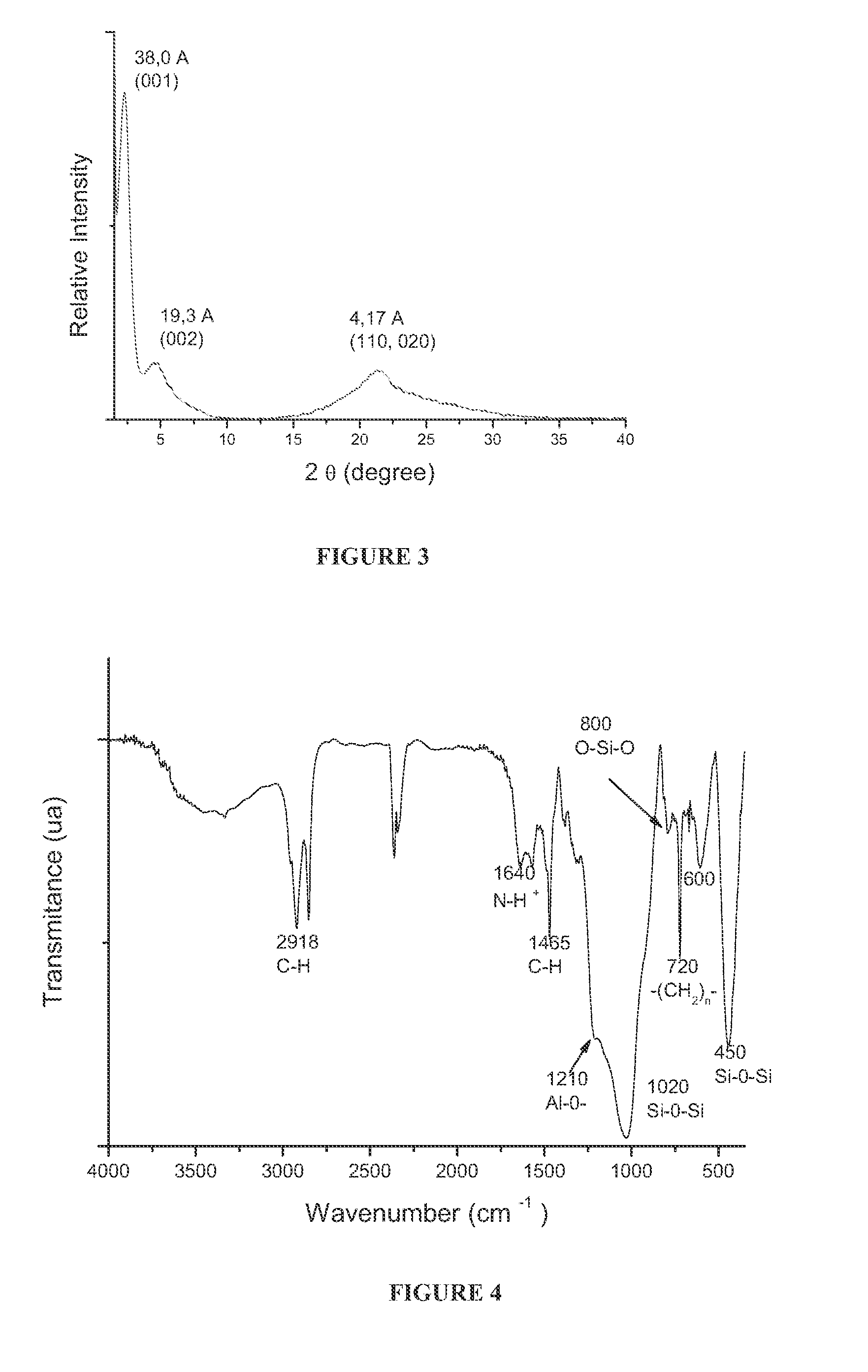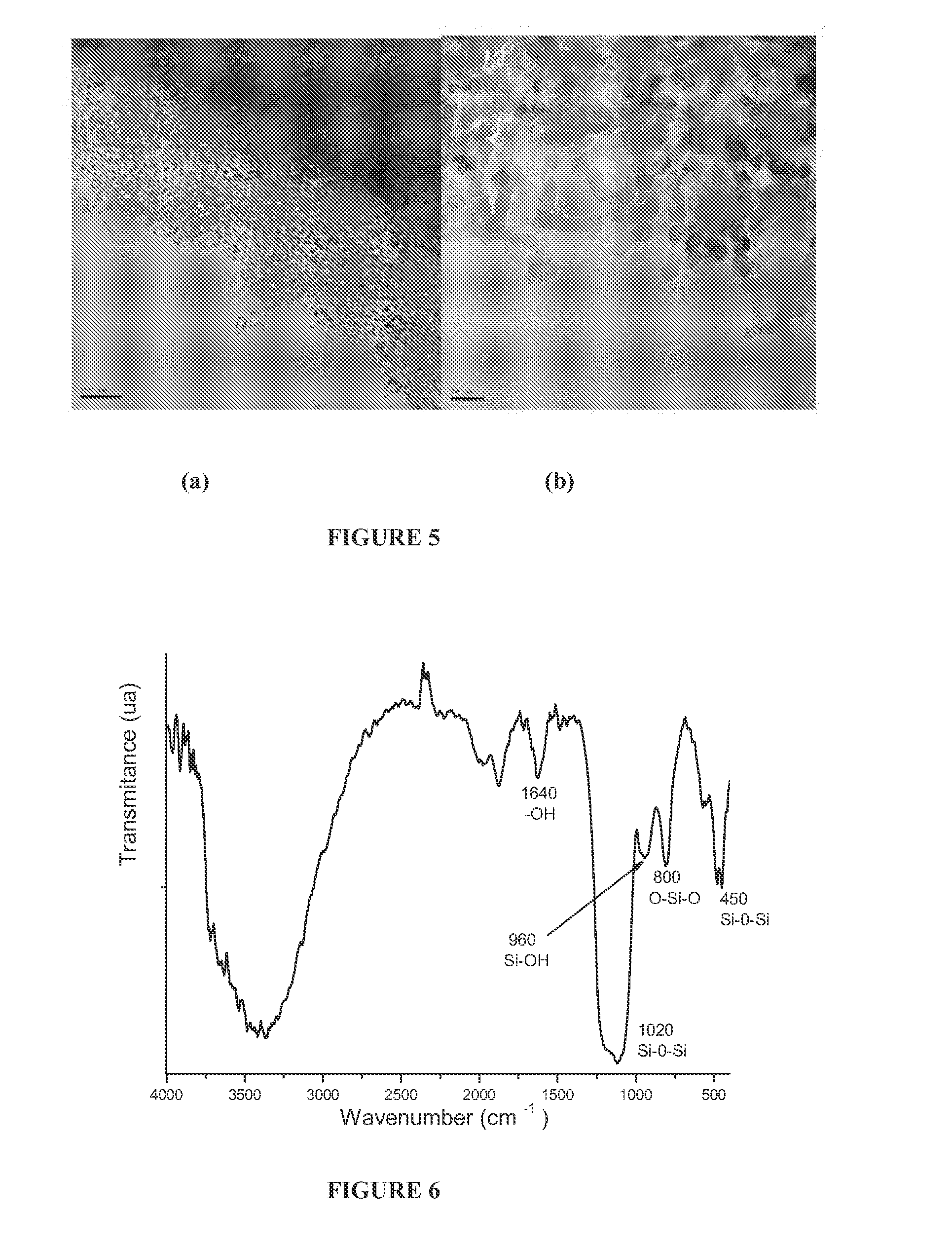Hybrid nanoparticles with controlled morphology and their use in thermoplastic polymer matrix nanocomposites
a thermoplastic polymer matrix and nanoparticle technology, applied in the field of hybrid nanoparticles with controlled morphology and their use in thermoplastic polymer matrix nanocomposites, can solve the problems that the dispersion efficiency of these nanoparticles on the polymer matrix has not been shown to be particularly efficient, and achieve the effects of preventing the nanosilica from wetting the polymer, increasing the level of nanosilica in the composition, and reducing the permeability of the polymer
- Summary
- Abstract
- Description
- Claims
- Application Information
AI Technical Summary
Benefits of technology
Problems solved by technology
Method used
Image
Examples
example 1
The Methodology for the Preparation of Spherical, Hybrid, Monodispersed Nanoparticles (NPSE)
[0102]Two solutions are prepared as follows:
[0103]Solution 1: Mixing of 54 millimeters of distilled water, 2.2 millimeters of an ammonium hydroxide (NH4OH) solution 25% by weight, 23.5 millimeters of ethanol (C2H5OH) and 0.342 grams of octadecyl amine (ODA).
[0104]Solution 2: In a preconditioned vessel with inert atmosphere, e.g., nitrogen, 55 millimeters of a TEOS solution was added and 23 millimeters of distilled ethanol (technical grade), and stirred during 10-15 minutes.
[0105]Subsequently the solution 1 is added to the solution 2 and is left reacting during 15-20 hours. The obtained suspension containing the nanoparticles NPSE is stored for subsequent use for the formation of nanocomposites based in polyolefin.
[0106]The characterization of the obtained nanoparticles NPSE is made by the transmission electron microscopy (TEM) (FIG. 1) and Fourier Transform Infrared Spectroscopy (FTIR) (FIG. ...
example 2
Methodology for Preparing Hybrid Lamellar Aluminosilicate Nanoparticles NPSL
[0108]Two solutions are prepared as follows:
[0109]Solution 1: Dissolving 19.55 grams of octadecyl amine (ODA) are dissolved in a mixture of ethanol:water=100:80 v / v at 50° C., subsequently 0.255 g of sodium nitrate (NaNO3) and 1.12 g of aluminum nitrate nona-hydrated (Al2(NO3)3.9H2O) under inert gas such as nitrogen are added.
[0110]Solution 2: In a preconditioned vessel with inert atmosphere, such as nitrogen, 3.8 millimeters of a TEOS solution was added to 50 millimeters of ethanol at room temperature.
[0111]A solution 1 is added slowly to the solution 2 and allowed to react at 50° C. during 25-30 hours. The resulting suspension is washed and filtered with 2.0 liters of a mixture of ethanol:water=100:80 v / v, at a temperature of 45-50° C. and finally is dried during 20 to 24 hours at a temperature of 60-70° C.
[0112]The resulting powder of NPSL nanoparticles obtained is characterized by testing of X-ray diffra...
example 3
Methodology for Obtaining the Non-Hybrid Silica Nanoparticles, Spherical and with Fibrillar Agglomeration
[0114]The same procedure already described in example 1 applies to the preparation of NPS nanoparticles. In this case only the preparation of solution 1 is modified, as already described on example 1, because the amine with 5-20 carbon atoms, such as ODA, are not added.
[0115]This produces a suspension of silica nanoparticles non-hybrid and agglomerate NPS, due to the lack of the organic component ODA in the surface of the nanoparticles as seen in the TEM images of FIG. 5. Also in the FTIR spectrum of nanoparticles NPS (FIG. 6) shows the absorption bands at 450 cm−1 and 1020 cm−1 corresponding to the tension and bending vibrations of Si—O—Si; at 800 cm−1 appear the bending vibrations of O—Si—O and at 960 cm−1, the symmetrical vibration of silanol group (Si—OH); as well as a wide band corresponding to OH groups of water between 3000 cm−1 and 3700 cm−1, as well as 1640 cm−1. On the ...
PUM
| Property | Measurement | Unit |
|---|---|---|
| diameter | aaaaa | aaaaa |
| diameter | aaaaa | aaaaa |
| melt flow index | aaaaa | aaaaa |
Abstract
Description
Claims
Application Information
 Login to View More
Login to View More - R&D
- Intellectual Property
- Life Sciences
- Materials
- Tech Scout
- Unparalleled Data Quality
- Higher Quality Content
- 60% Fewer Hallucinations
Browse by: Latest US Patents, China's latest patents, Technical Efficacy Thesaurus, Application Domain, Technology Topic, Popular Technical Reports.
© 2025 PatSnap. All rights reserved.Legal|Privacy policy|Modern Slavery Act Transparency Statement|Sitemap|About US| Contact US: help@patsnap.com



